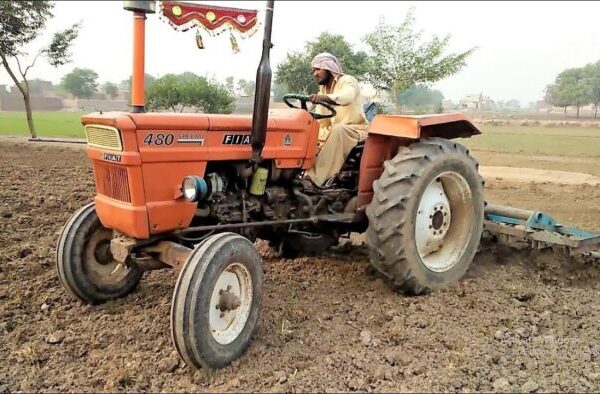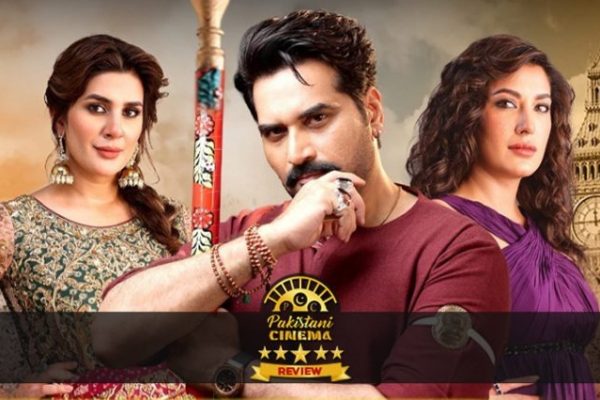Pakistan is a diverse country with a rich cultural heritage and a variety of languages spoken across its regions. While the official language of Pakistan is Urdu, there are several other languages that are spoken and understood by its people. From Punjabi to Sindhi, Balochi to Pashto, each language has its unique features and has contributed to the diverse cultural landscape of the country. In this blog post, we will explore some of the most popular languages spoken in Pakistan, their characteristics, and their significance in the country’s cultural heritage. Whether you’re planning a trip to Pakistan or simply interested in learning about its rich linguistic diversity, this post will provide you with a comprehensive overview of the country’s most spoken languages.
List of Popular Languages in Pakistan
Urdu (National Language of Pakistan)
Urdu is a fascinating language with a rich history and cultural significance in Pakistan. It is the national language of Pakistan and is widely spoken and understood throughout the country. Urdu is derived from various languages, including Persian and Arabic, and has a distinct script that makes it visually stunning to read.
It is a popular language for literature, poetry, and music in Pakistan and is often considered a language of romance due to its elegant and poetic style. Urdu poetry is especially famous and is enjoyed by people of all ages in Pakistan. Some of the most famous Urdu poets include Mirza Ghalib, Allama Iqbal, and Faiz Ahmed Faiz. Urdu literature is also rich in fiction, non-fiction, and drama.
Urdu is the language of the media in Pakistan and is used extensively in newspapers, magazines, radio, and television. It is also used in official government and administrative contexts. Learning Urdu is an excellent way to connect with the people and culture of Pakistan and gain a deeper understanding of the country.
Punjabi
Punjabi is the second most spoken language in Pakistan and is primarily spoken in the Punjab province, which is the largest province in the country. It is also spoken in parts of India, especially in the state of Punjab. Punjabi is a tonal language, which means that the pitch and tone of words affect their meaning.
The language has a rich literary tradition, and some of the most famous Punjabi poets include Bulleh Shah, Waris Shah, and Baba Farid. Punjabi poetry is known for its depth, sincerity, and simplicity. Punjabi music is also famous, with bhangra and folk music being popular genres. Bhangra is a lively dance form that is often performed at weddings and other celebrations.
It is the language of the Sikh religion, which is prevalent in Punjab, and many religious texts and hymns are written in Punjabi. Punjabi is also used in the media and in official contexts in Punjab. Learning Punjabi is an excellent way to connect with the people and culture of Punjab and gain a deeper understanding of the region.
Sindhi
Sindhi is a language spoken in the Sindh province of Pakistan and is also spoken in parts of India. It has a rich literary tradition, and some of the most famous Sindhi poets include Shah Abdul Latif Bhittai and Sachal Sarmast. Sindhi poetry is known for its spiritual and mystical themes and often deals with themes such as love, humanity, and God.
Sindhi music is also famous, with Sufi music and folk music being popular genres. Sufi music is often performed at shrines and is known for its spiritual and devotional themes. Folk music is also popular, with instruments such as the dholak, flute, and harmonium being used.
Sindhi is also used in the media and in official contexts in Sindh. Learning Sindhi is an excellent way to connect with the people and culture of Sindh and gain a deeper understanding of the region.
Balochi
Balochi is a language spoken in the Balochistan province of Pakistan and is also spoken in parts of Iran and Afghanistan. It is a member of the Northwestern Iranian branch of the Indo-Iranian languages. Balochi has a rich oral tradition, and poetry, songs, and stories are often passed down through generations orally.
Balochi poetry is known for its heroic and patriotic themes and often deals with themes such as bravery, loyalty, and love. The Balochi epic, “Hani and Sheh Mureed,” is a popular folk tale that is often recited at social gatherings. Balochi music is also famous, with folk music being a popular genre. The Balochi saaz, a traditional stringed instrument, is often used in Balochi music.
Balochi is also used in the media and in official contexts in Balochistan. The Balochistan government has made efforts to promote the language and has established Balochi language schools and institutes. The Balochi Academy, established in Quetta in 1971, is a prominent organization that promotes Balochi literature, culture, and language.
Learning Balochi is an excellent way to connect with the people and culture of Balochistan and gain a deeper understanding of the region. It is also a valuable language for those interested in the history and culture of the Baloch people, who have a unique and fascinating culture that has evolved over centuries.
Pashto
Pashto is a language spoken in the Khyber Pakhtunkhwa province of Pakistan and is also spoken in parts of Afghanistan. It is a member of the Eastern Iranian branch of the Indo-Iranian languages. Pashto has a rich literary tradition, and some of the most famous Pashto poets include Rahman Baba and Khushal Khan Khattak.
The Pashto poetry is known for its romantic and patriotic themes and often deals with themes such as love, war, and freedom. Pashto music is also famous, with folk music being a popular genre. The rubab, a traditional stringed instrument, is often used in Pashto music.
Pashto is also used in the media and in official contexts in Khyber Pakhtunkhwa. The provincial government has made efforts to promote the language and has established Pashto language schools and institutes. The Pashto Academy, established in Peshawar in 1955, is a prominent organization that promotes Pashto literature, culture, and language.
Learning Pashto is an excellent way to connect with the people and culture of Khyber Pakhtunkhwa and gain a deeper understanding of the region. It is also a valuable language for those interested in the history and culture of the Pashtun people, who have a unique and fascinating culture that has evolved over centuries.
Additional Languages in Pakistan
Aer:
Aer is spoken in the Lower Dir district of Khyber Pakhtunkhwa. It is a member of the Indo-Aryan branch of the Indo-Iranian languages. Aer has a unique phonology and grammar and has been the subject of much linguistic research.
Badeshi:
Badeshi is spoken in the Bajaur district of Khyber Pakhtunkhwa. It is a member of the Indo-Aryan branch of the Indo-Iranian languages. Badeshi has a unique phonology and grammar and has been the subject of much linguistic research.
Changthang:
Changthang is spoken in the Changthang region of Gilgit-Baltistan. It is a member of the Tibetic language family and has a unique phonology and grammar. Changthang culture is heavily influenced by Tibetan culture.
Chitrali:
Chitrali is spoken in the Chitral district of Khyber Pakhtunkhwa. It is a member of the Indo-Aryan branch of the Indo-Iranian languages. Chitrali has a rich literary tradition, and folk tales and songs are often passed down through generations.
Dogri:
Dogri is spoken in parts of Jammu and Kashmir, Himachal Pradesh, and Punjab. It is a member of the Indo-Aryan branch of the Indo-Iranian languages. Dogri has a rich literary tradition, with works ranging from poetry to prose.
Ghera:
Ghera is spoken in the Ghizer district of Gilgit-Baltistan. It is a member of the Dardic language family and has a unique phonology and grammar. Ghera culture is heavily influenced by the Balti and Shina cultures.
Gujarati:
Gujarati is spoken in parts of Sindh and Balochistan. It is a member of the Indo-Aryan branch of the Indo-Iranian languages. Gujarati has a rich literary tradition, with works ranging from poetry to prose.
Gojri (Gujari):
Gojri, also known as Gujari, is spoken in parts of Khyber Pakhtunkhwa, Punjab, and Azad Jammu and Kashmir. It is a member of the Indo-Aryan branch of the Indo-Iranian languages. Gojri has a rich oral tradition, and folk tales and songs are often passed down through generations.
Khetrani:
Khetrani is spoken in the Kachhi district of Balochistan. It is a member of the Indo-Aryan branch of the Indo-Iranian languages. Khetrani has a unique phonology and grammar and has been the subject of much linguistic research.
Khowar:
Khowar is spoken in the Chitral district of Khyber Pakhtunkhwa and parts of northern Gilgit-Baltistan. It is a member of the Dardic language family and has a rich literary tradition. Khowar poetry often deals with themes such as love, nature, and social issues.
Kohistani Memoni:
Kohistani Memoni is spoken in parts of Khyber Pakhtunkhwa and Punjab. It is a member of the Indo-Aryan branch of the Indo-Iranian languages. Kohistani Memoni has a rich oral tradition, and folk tales and songs are often passed down through generations.
Pothwari:
Pothwari is spoken mainly in the Pothohar Plateau region of Punjab and Azad Kashmir in Pakistan, as well as in some parts of Jammu and Kashmir in India. It is a member of the Lahnda language family, which is also known as Western Punjabi
Sansi:
Sansi is spoken by the Sansi people, who are traditionally nomadic and have historically lived throughout India and Pakistan. The language has a unique vocabulary and grammar that reflects the Sansi way of life and cultural traditions.
Torwali:
Torwali is spoken in the Swat district of Khyber Pakhtunkhwa. It is a member of the Dardic language family and has a rich oral tradition, with epic poems and folk songs that have been passed down through generations.
Yidgha:
Yidgha is spoken in the Lotkoh Valley in Chitral district of Khyber Pakhtunkhwa. It is a member of the Dardic language family and has unique phonology and grammar. Yidgha has a rich literary tradition, with works ranging from poetry to prose.
Zangskari:
Zangskari is spoken in the Zanskar region of Ladakh, which is a disputed territory between India and Pakistan. It is a member of the Tibetic language family and has unique phonology and grammar.
Final Thoughts on Popular Languages in Pakistan
Pakistan is a linguistically diverse country with a rich variety of languages spoken throughout its regions. Urdu is the national language and is widely spoken, particularly in urban areas, while Punjabi, Sindhi, Pashto, and Balochi are also widely spoken in their respective regions. English is also a significant language in Pakistan, particularly in education, government, and business.
In addition to these major languages, there are many other local languages spoken in Pakistan, each with its own unique features and cultural significance. These languages include Kashmiri, Shina, Brahui, Saraiki, Hindko, and many more.
The linguistic diversity of Pakistan is a reflection of its rich cultural heritage and history, and it is important to recognize and celebrate this diversity. While efforts are being made to promote and preserve these languages, many of them are facing threats from globalization and the dominance of Urdu and English. It is essential to continue supporting and preserving these languages to ensure that they continue to thrive and contribute to Pakistan’s cultural and linguistic heritage.
FAQs related to the Popular Languages in Pakistan
What is the national language of Pakistan?
Urdu is the national language of Pakistan.
What are some other widely spoken languages in Pakistan?
Punjabi, Sindhi, Pashto, and Balochi are also widely spoken in their respective regions.
Is English spoken in Pakistan?
Yes, English is also a significant language in Pakistan, particularly in education, government, and business.
What are some other local Languages in Pakistan?
Some other local languages spoken in Pakistan include Kashmiri, Shina, Brahui, Saraiki, Hindko, and many more.
Are these local languages endangered in Pakistan?
Many of these local languages are facing threats from globalization and the dominance of Urdu and English. Efforts are being made to promote and preserve these languages.
How important is linguistic diversity in Pakistan?
The linguistic diversity of Pakistan is a reflection of its rich cultural heritage and history, and it is important to recognize and celebrate this diversity. It is essential to continue supporting and preserving these languages to ensure that they continue to thrive and contribute to Pakistan’s cultural and linguistic heritage.




![20 Famous Festivals in Pakistan [A Cultural Odyssey]](https://mobizilla.pk/wp-content/uploads/2023/04/1-11-1024x640-1-600x400.jpg)
